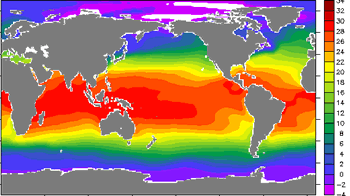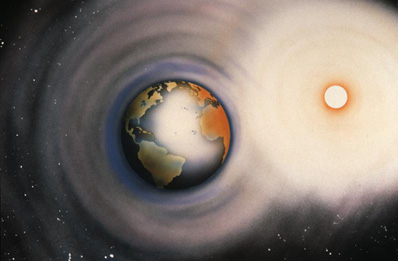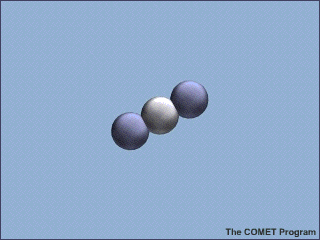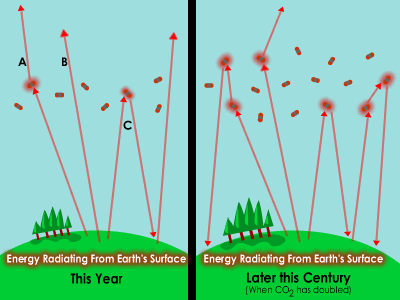Click on image for full size
Courtesy of USGS Astrogeology Research Program
What Controls the Climate?
A factor that has an affect on climate is called a “forcing.” Some forcings, like volcanic eruptions and changes in the amount of solar energy, are natural. Others, like the addition of greenhouse gases to the atmosphere, are caused by humans.
The Sun Affects Climate
The heat on Earth comes from the Sun, so climate can change if there is a change in the amount of solar energy that gets to Earth. Changes to the cycle of solar activity, called the 11-year solar cycle, can produce small but noticeable impact on climate. Recent climate change is too large to be caused by solar activity. On timescales of tens of thousands to hundreds of thousands of years, changes in the way Earth orbits the Sun can cause changes to climate.
Volcanic Eruptions Affect Climate
When volcanoes erupt they spew more than hot red lava and ash. Tiny particles called aerosols wind up in the atmosphere too. These tiny particles, made of sulfur dioxide, get into the stratosphere and reflect solar radiation back out to space. This causes cooling. The effect is temporary, lasting usually only a year or two.
Greenhouse Gases Affect Climate
Only a small portion of the molecules that are in Earth’s atmosphere are greenhouse gases, yet they have a strong affect. These gases trap heat through a process called the greenhouse effect. While greenhouse gases are a natural part of the atmosphere, their quantities have increased over the past 150 years due to burning of fossil fuels and decrease in the amount of forests which naturally take up the greenhouse gas carbon dioxide during photosynthesis.
Snow and Ice Affect Climate
The cryosphere, the frozen part of the Earth including snow and ice, has an impact on Earth’s climate. Because snow and ice are light in color, they have a high albedo – the ability to reflect most solar radiation back out to space. When snow and ice melt as Earth’s climate warms, less energy is reflected; this causes even more warming.
There are also other aspects of our planet that have an impact on climate too. Scientists are actively studying the impact of clouds on climate and the effect of aerosols on climate. Melting Arctic sea ice could change ocean circulation, producing a regional impact on climate. This is also an area of active research.















